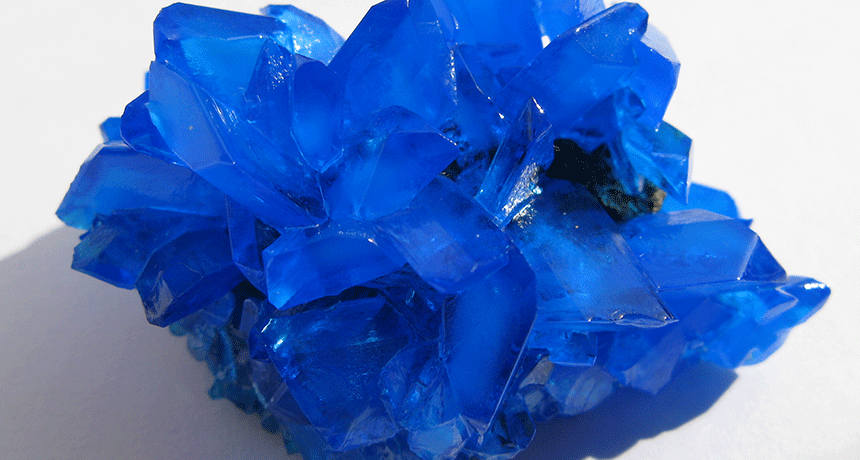atom The basic unit of a chemical element. Atoms are made up of a dense nucleus that contains positively charged protons and uncharged neutrons. The nucleus is orbited by a cloud of negatively charged electrons.
base (in chemistry) A chemical that produces hydroxide ions (OH-) in a solution. Basic solutions are also referred to as alkaline. (in genetics) A shortened version of the term nucleobase. These bases are building blocks of DNA and RNA molecules.
chemistry The field of science that deals with the composition, structure and properties of substances and how they interact. Scientists use this knowledge to study unfamiliar substances, to reproduce large quantities of useful substances or to design and create new and useful substances. (about compounds) Chemistry also is used as a term to refer to the recipe of a compound, the way it’s produced or some of its properties. People who work in this field are known as chemists.
compound (often used as a synonym for chemical) A compound is a substance formed when two or more chemical elements unite (bond) in fixed proportions. For example, water is a compound made of two hydrogen atoms bonded to one oxygen atom. Its chemical symbol is H2O.
copper A metallic chemical element in the same family as silver and gold. Because it is a good conductor of electricity, it is widely used in electronic devices.
crystal (adj. crystalline) A solid consisting of a symmetrical, ordered, three-dimensional arrangement of atoms or molecules. It’s the organized structure taken by most minerals. Apatite, for example, forms six-sided crystals. The mineral crystals that make up rock are usually too small to be seen with the unaided eye.
diamond One of the hardest known substances and rarest gems on Earth. Diamonds form deep within the planet when carbon is compressed under incredibly strong pressure.
laser A device that generates an intense beam of coherent light of a single color. Lasers are used in drilling and cutting, alignment and guidance, in data storage and in surgery.
lead A toxic heavy metal (abbreviated as Pb) that in the body moves to where calcium wants to go (such as bones and teeth). The metal is particularly toxic to the brain. In a child’s developing brain, it can permanently impair IQ, even at relatively low levels.
nitrate An ion formed by the combination of a nitrogen atom bound to three oxygen atoms. The term is also used as a general name for any of various related compounds formed by the combination of such atoms.
nitrogen A colorless, odorless and nonreactive gaseous element that forms about 78 percent of Earth's atmosphere. Its scientific symbol is N. Nitrogen is released in the form of nitrogen oxides as fossil fuels burn.
oxygen A gas that makes up about 21 percent of Earth's atmosphere. All animals and many microorganisms need oxygen to fuel their growth (and metabolism).
salt A compound made by combining an acid with a base (in a reaction that also creates water). The ocean contains many different salts — collectively called “sea salt.” Common table salt is a made of sodium and chlorine.
sodium A soft, silvery metallic element that will interact explosively when added to water. It is also a basic building block of table salt (a molecule of which consists of one atom of sodium and one atom of chlorine: NaCl). It is also found in sea salt.
sulfate A family of chemical compounds that are related to sulfuric acid (H 2 SO 4 ). Sulfates occur naturally in drinking water.
sulfur A chemical element with an atomic number of sixteen. Sulfur, one of the most common elements in the universe, is an essential element for life. Because sulfur and its compounds can store a lot of energy, it is present in fertilizers and many industrial chemicals.
weed (in botany) A plant growing wild in, around — and sometimes smothering over — valued plants, such as crops or landscape species (including lawn grasses, flowers and shrubs). Often a plant becomes such a botanical bully when it enters a new environment with no natural predators or controlling conditions, such as hard frosts. (in biology, generally) Any organism may be referred to as a “weed” if it enters an environment and begins to overwhelm the local ecosystem.

